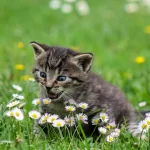If you’ve ever seen their tiny features and observed them in action, you may see why gerbils and hamsters have become popular pets. At first look, they appear to have many characteristics in common, including constantly growing incisor teeth, small claws that allow them to fulfill their digging and burrowing inclinations, and a voracious appetite for protein, with seeds, fruits, and vegetables.
Consider the differences between the two, and then decide which one is the best suit for your house and lifestyle.
Gerbils, like hamsters, are popular pets in Europe and the United States. Despite their resemblance to rats on the surface, these rodents are distinct species. Both of these terms are interchangeable. Even though they share many features, a gerbil and a hamster are not synonymous — they are two different kinds of rodent species.
The Mongolian gerbil is the gerbil that most people keep as a pet. These gerbils have a reputation for being tough and resilient.
Hamsters come in various colors and sizes, and they are popular as household pets. Numerous dwarf hamster species exist. Syrian or dwarf hamsters make excellent pet hamsters.
Certain types of hamsters are more closely related to gerbils than others.

- Hamsters and gerbil species are rodents kept as pets.
- Plants and insects are the primary sources of nutrition for both species. As a result, they are omnivorous.
- They are both covered in thick fur, a common trait.
- Rodents like hamsters and gerbils contain diseases, including rabies, that can harm your health.
- Because hamsters and gerbils are rodents, their teeth continuously grow throughout their lifetimes.
You might be understood the difference between gerbils and hamsters. Both are little rodents that look similar. Even taking care of them is identical. However, you should know some obvious distinctions in temperament and personality when choosing between these species.
Between gerbils and hamsters, there are several distinctions. Small size and tiny claws make people think they look the same. However, each has distinct features that can only be discovered by digging further into them.
Hamsters are larger and heavier than gerbils, which are rodents that are more closely related to rats and mice in appearance and size. Adult hamsters can grow up to six inches long, but gerbils can grow up to four inches long at full maturity.
When it comes to their physical appearance, they have a wide range of variations in the color of their back legs, the length of their tails, and the size of their bodies.
The tails of hamsters and gerbils are one of the most striking differences. Gerbils have lengthy tails, about 4 inches long. Certain gerbil species have hairy tails, while others are bald. For example, Mongolian gerbils’ seats are fuzzy, but fat-tailed gerbils’ tails are hairless. As their name implies, fat-tailed gerbils have a substantially larger heart than others, easily identifiable.
Tails are very short in hamsters, usually less than an inch long, distinct from gerbils. However, the Chinese hamster is an exception to the norm, as it possesses a long tail that is approximately as long as its body.
The feet of gerbils are exceptionally long. They balance themselves on their back legs and look around, looking for their surroundings and approaching predators.
Hamsters, on the other hand, have smaller, stockier feet. They do not utilize their legs to support themselves; rather, they use them to run around.

Two-toned hide: The top of a gerbil’s body is a different color than the belly. The gerbils come in various colors, with the most frequent being a variety of shades of brown or grey. In addition, their eyes vary in color from dark brown to black, pink to deep crimson. In their coats, both of these rodents exhibit a high level of color variety.
A hamster’s coat can be either solid color or two-toned in appearance. Some of the most frequent shades of a hamster’s coat are grey or orange, but it can also come in other hues such as sable, cinnamon, gold, or rust. In addition, their coat might be short, long, curly, or silky.
Hamsters have a rounded face with a small blunt muzzle and distinctive cheek pouches. For storing and loading food, this pouch has a pocket that extends to the back of the shoulder. To return to the nest, wild hamsters use bags.
Gerbils have a long nose and a narrow face, which resembles that of a rate more than that of a hamster. Additionally, they lack hamster-like cheek pouches. However, gerbils have been observed carrying food to their nest despite the lack of cheek pouches for food storage.
Gerbils have long, slender bodies that are regarded as streamlined. Additionally, they have long, muscular hind legs and huge feet, making them extremely agile. As a result, it’s not uncommon to find a gerbil leaping around or performing acrobatics.
Hamsters have short and spherical bodies, giving them the appearance of a softball of fluff, much like their faces. However, hamsters are less agile than gerbils because of their shorter limbs.
The temperament and social tendencies of hamsters and gerbils are two of the most important variations between the two species. Hamsters are nocturnal and are most active at night. They are also very solitary creatures, they don’t like to share their area, so they’re normally kept as pets alone. When others attack their domain, hamsters battle to the death, hamsters may be aggressive with other hamsters, but in general, they are calm and docile. They are generally friendly with humans since they can occasionally bite, particularly when shocked or searching for something edible.
Gerbils are most active during the day and can be quite content to live as a pair or a group of their own. They are curious and friendly, and they are also very social. They are also very active most of the time. They are generally friendly towards humans and don’t bite when handled.
Hand-taming these two pets is the most crucial thing to remember while training them. Before you begin training them, make sure they are comfortable with you.
It is easier to hand-tame a gerbil if it is relaxed with you and does not fear being touched or held. They are so active that you can teach them easily.

Hamsters are unable to be trained for anything other than being held. Therefore, you will need patience and perseverance to hand-tame them. Before introducing a new hamster, allow it some time to settle and relax. You can begin teaching them once they start eating and drinking in their cage. Compared to older hamsters, young hamsters are more likely to be prepared and tamed.
Caring for gerbils isn’t too hard. They don’t require much space. If you have two, keep them together in an enclosure approximately a one-foot wide and two feet long. It will benefit them to be held in a wider space.
It’s simple to feed a gerbil. Gerbil food, which can be purchased at any pet store, should be used. Frequently, these are loose seeds mixed or rodent chunks.
Hamsters and gerbils can be kept in comparable settings. Wire cages and glass enclosures work well because they have equivalent space requirements. You must, however, make sure that there is adequate ventilation provided.
Hamsters require a well-balanced diet that includes a variety of fruits, veggies, and proteins.
Although gerbils are typically considered strong and healthy pets, they may occasionally experience health issues. These health complications include dental, skin, ear infections, ear mass growth, and epilepsy.
Hamsters are more likely to have diarrhea, other cancers, and dental issues.
A gerbil’s average lifespan is three years, whereas a hamster’s typical lifespan is two years. However, several of these species have lived longer than the average lifespan.
Gerbils are, in fact, social animals. However, they should never be controlled individually. These two species should never be kept in the same cage together.
Hamsters are aggressive rodents with a strong sense of territorial aggression. If they are kept in the same cage, they are more prone to attack gerbils. Therefore, Syrian hamsters must live alone, never with another pet.
Gerbils are the ideal choice if you want many rodents living together. Certain dwarf hamsters will thrive in a littermate environment. Even these, though, can become territorial and attack one another. If this occurs, they will be required to be placed in a separate facility.
When purchasing commercial pet food, read the label to see what type of animal is recommended.
Fibrous foods are necessary for gerbils and hamsters since they help grind down the teeth. However, they require a specific nutrient balance.
Certain commercial foods may specify that they are safe for gerbils and hamsters. However, not every hamster food is safe for Gerbils, so read the label carefully. This may result in a nutritional deficiency in your gerbil.
Honestly, these rodents are great pets that don’t take much care. Once you’ve gotten them accustomed, all you’ll have to do is give them the essentials: food, toys, interactions, and water. So which is best for your family?
If you only want one rodent, a hamster is a good choice. They are solitary species that thrive when left alone. However, when two male hamsters live together, they’re more likely than not to try to attack each other.
Gerbils are extremely social animals, making them the best choice for a family with multiple pets.
If you’re looking for a way to tell the difference between the two types of species, you’ll find that hamsters are larger in size and less social, while gerbils are smaller and more pleasant. Also, compared to gerbils, hamsters have a shorter lifespan.
If you’re considering getting your children their first pet, choose one of these since they’re easy to care for, don’t require frequent physical activity, and adapt well to new surroundings. In addition, their friendly nature instantly helps connect them to others. Even though they may only survive for a few years on average, they are extremely satisfying and rewarding to spend time with.




